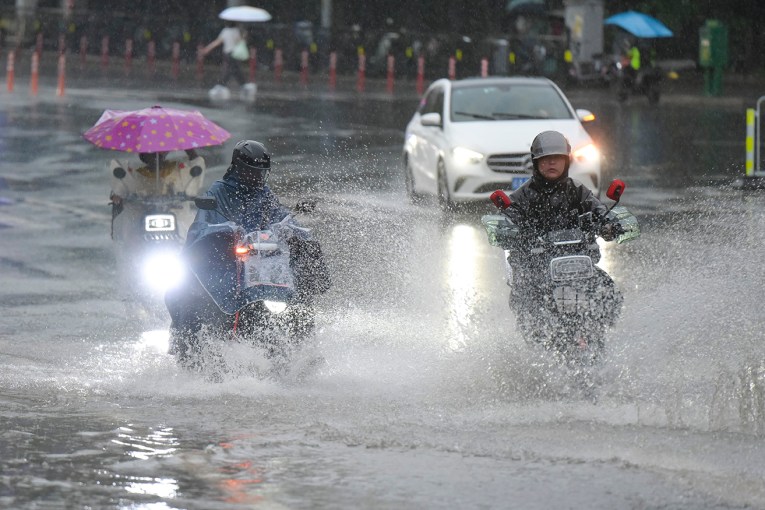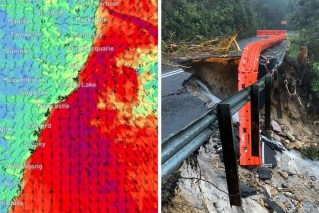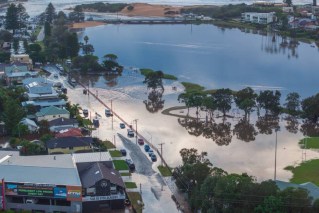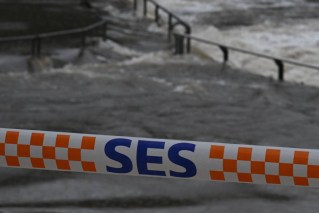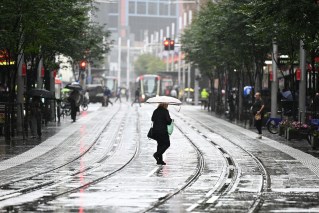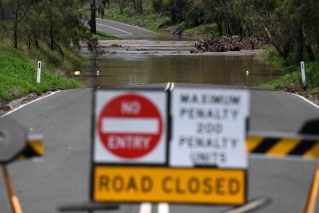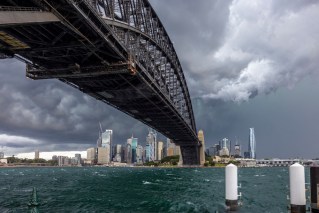Why we’re partly to blame for the freak weather in 2016

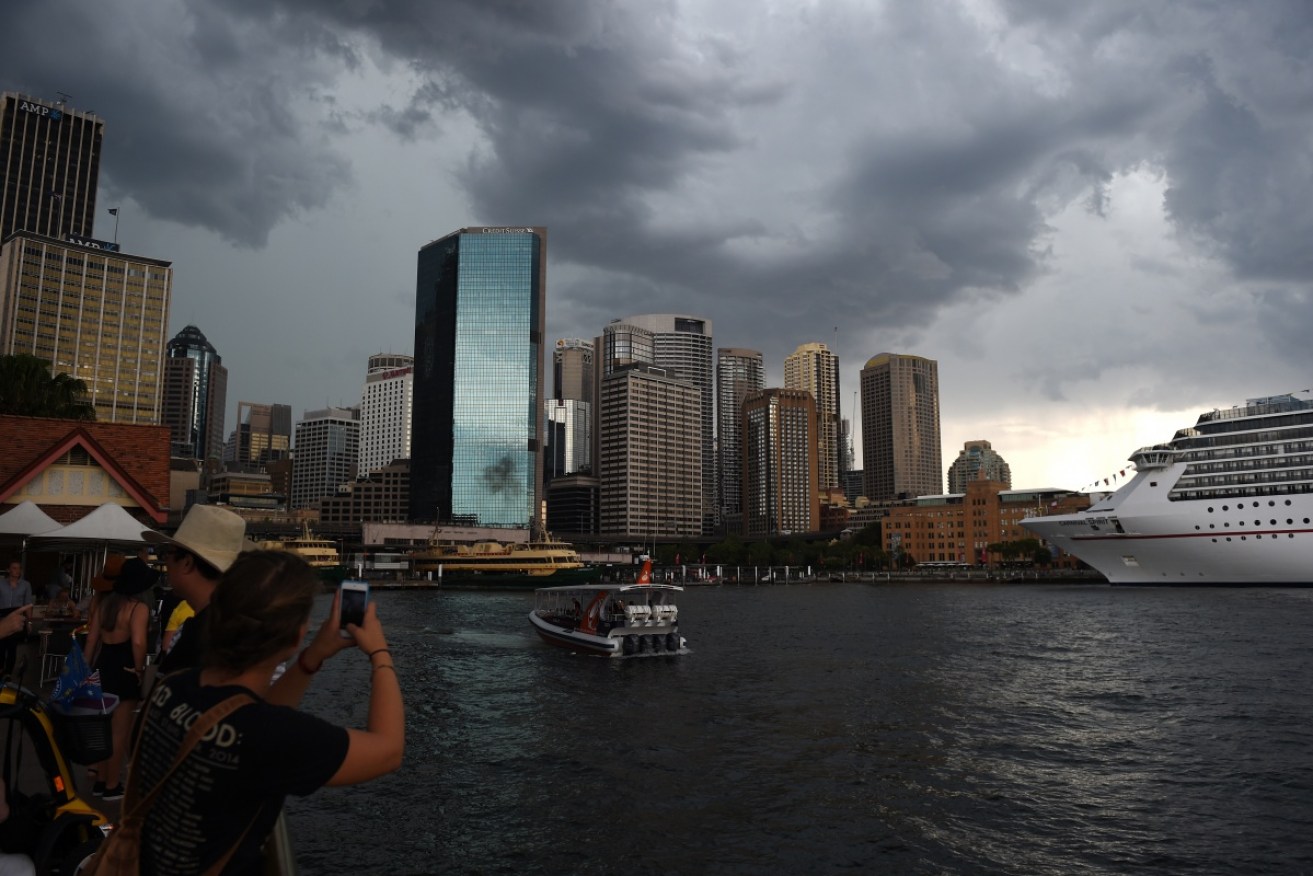
Storms ravaged Australian capital cities throughout the year, but also caught the attention of tourists. Photo: AAP
Mosquito swarms, deadly asthma, freak thunderstorms, fires and floods, dying coral, heatwaves and downpours: 2016 was a year of extremes, as Australia’s weather lurched between polar opposites. And it’s partly our fault.
In its Annual Climate Statement on Thursday, the Bureau of Meteorology reported that Australia sweltered through its hottest autumn in history and its fourth-hottest year overall.
The extreme weather has had a cascade of side effects, not least of which is a booming mosquito population in Victoria, which is spreading the nasty (but thankfully not deadly) Ross River virus.
The cause: an especially strong El Niño coupled with “anthropogenic” climate change. The “anthro” bit – that’s us.
Climate change challenge
Although 2017 is expected to be relatively cooler than the preceding three years, all of which have been record-breaking, the increasing frequency and severity of extreme weather events remains a serious threat.
For example, a 2016 report by the Climate Council predicted that “without substantial action to tackle climate change”, Australia would experience more severe heatwaves that could cause hundreds of additional deaths annually by 2050.

The past year brought fierce storms, floods and, of course, bushfires. Photo: AAP
BoM climate information services assistant director Neil Plummer said 2016 was an eventful year punctuated by extreme weather events, such as the severe thunderstorms that wrecked havoc to South Australia’s power network in late September.
“The year started off very warm and dry, with bushfires in Victoria, Tasmania and Western Australia, and a nationwide heatwave from late February to mid-March,” Mr Plummer said in a statement.
“We had our warmest autumn on record, partly due to a very strong 2015-16 El Niño.”
The national mean temperature for 2016 was 0.87°C above average – the fourth-warmest since records began in 1910 – and there was a nationwide heatwave from late February to mid-March.
North-west Tasmania experienced devastating bushfires that burnt around 128,000 hectares of land and forest, including around 19,000 hectares of Tasmania’s World Heritage wilderness area.
The Great Barrier Reef was also hit with a mass coral bleaching event that caused approximately two-thirds of corals in the 700-kilometre northern stretch of the reef to completely die off.

The state of the Great Barrier Reef was a talking point throughout the year. Photo: AAP
A new study from scientists at the University of Miami has also predicted that, unless drastic action is taken by world leaders to reduce greenhouse gas emissions, most of the world’s coral reefs will suffer annual bleaching events by 2043.
Across the nation’s capitals, Sydney and Darwin witnessed their warmest year on record for both maximum and minimum temperature, Hobart had its warmest night on record, and both Hobart and Brisbane had their warmest annual mean temperatures on record.
Records broken
National annual rainfall was also 17 per cent above average and another record was broken with sea surface temperature, which was 0.77°C above average.
“In May the El Niño broke down and the dry start was followed by record wet from May to September as a negative Indian Ocean Dipole developed, with ocean waters warming to the north-west of Australia,” said Mr Plummer.
“Widespread, drought-breaking rains led to flooding in multiple states.
“Even northern Australia saw widespread rainfall, during what is usually the dry season, greening regions that had been in drought for several years.”

Rain made it to Uluru, prompting spectacular photos and international news coverage. Photo: AAP
In the second half of 2016, the combination of warm weather with heavy rainfall resulted in a surge in mosquito populations in Victoria, New South Wales, South Australia and Queensland.
As a result, there has been an explosion in Ross River virus cases, which are carried by mosquitoes – in Victoria, around 314 people had been diagnosed with the virus during the year to December 29, an increase of almost 50 per cent from 2015.
Melbourne also experienced a freakish ‘thunderstorm asthma’ event, which occurs when a storm hits on a hot and windy day when there are high levels of pollen in the air, that claimed eight lives.
Recent reports have indicated that both NASA and the National Oceanic and Atmospheric Administration (NOAA) in the US will announce later this month that 2016 was Earth’s warmest year on record.
The World Meteorological Organisation also predicted that 2016 average global temperatures would be around 1.2°C higher than the pre-industrial average.
